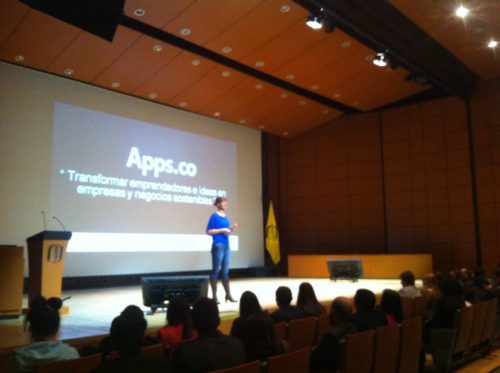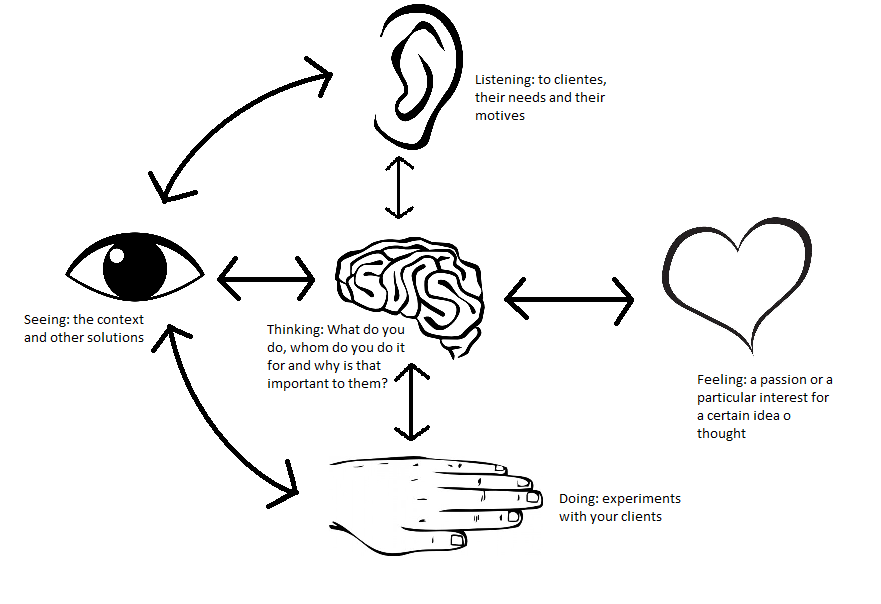Lean Startup is not about just throwing something together, introducing it in the market, and getting your metrics up. You need Customer Discovery – in this series you will find out how the Playground for Entrepreneurs came into existence.
Some people just complain, others become politicians or create companies. My solution to the struggles I saw amongst entrepreneurs and supporters was to create a game.
How it all Began – Setting the Scene
It was maybe in 2014 or 2015 and I was working in the Colombian Ministry of ICT at their Apps.co initiative. To give you an impression of the dimension of this program:
- We ran an 8-week Business Discovery program.
 About twice a year.
About twice a year.- With every cohort 140 startup teams participated at first, later we scaled up.
- We had local institutions all over the country operating the program. Their mentors were specifically trained in Customer Development and Lean Startup.
You could imagine that to me, this was probably the coolest job ever (getting to help a great diversity of people to achieve their dreams and traveling all over to do it). All of us did the best we could. Still, there were quite some struggles that became obvious. From the Ministry’s perspective, as well as the local operating institutions and the entrepreneurial community in general. Now I’ll leave the Ministry aside, as I want to focus on the specific entrepreneurship ecosystem rather than politics.
Local Knowledge: What I learned in Customer Discovery
The Entrepreneurs – What I learned about Entrepreneurs doing Customer Discovery
On the other hand, I could see many aspiring entrepreneurs struggling. Being an entrepreneur is a big dream for many people in Colombia. As for the program of the Ministry, when we did a call we could expect about 2000 entrepreneurial teams to apply to it. Initially, we could attend only 140 at a time on a national level, which is already a huge cohort. After that, we scaled up, but we still had to turn down a lot of teams anyway. Now usually most of these teams were not prepared to enter the program. They would probably also lack the knowledge or experience on how to progress their ideas to the point of being admitted. These were motivated people looking for help to become smarter about their ideas and about becoming entrepreneurs, generally. Now as I mentioned those coming from rural areas or intermediate cities would suffer even bigger disadvantages.
All of this made me think about something to help these people and also the local institutions, for example with their preparation process to get a better chance of being selected for the right support programs. Or to progress their ideas regardless.
Sidestep: Entrepreneurship Education
Meanwhile, I also had quite a couple of experiences with entrepreneurship education. Firstly, in workshops on behalf of the Ministry that were open to the public. These workshops attracted a wide variety of small business owners, students, aspiring entrepreneurs, and much more. Also some workshops at high schools, usually on my initiative; Colombian law prescribes that at all levels of education, the topic of entrepreneurship should be addressed by schools. Schools frequently don’t know what to do with it, which translates to a lot of ‘director’s nephews and nieces’ teaching these classes. Some of the teachers that ended up teaching this class did an awesome job. Honorary mention especially to la Profe Lina from Bucaramanga – time and time again excellent ideas, aspiring entrepreneurs, and sharp pitches – presented by 15 year-olds. But unfortunately, I’ve seen a lot that just seem to smash kids’ dreams, even if they are they were not that far out.
Now it is easy to blame these teachers, but considering many of them don’t know any better themselves, this is a matter of education, not of bad intentions. Entrepreneurship and innovation are skills. If someone never learned about it, it is very difficult to help people think about their vision and help them set the first steps. Therefore, we would need something that could both educate entrepreneurs and guide teachers at the same time.
Conclusion: Opportunity for Action
So in Customer Discovery, perceiving these struggles and talking to people in the ecosystem about them, I had learned quite a lot. I started to draw a couple of things down. I showed it to people, especially fellow-startup and entrepreneurship people, improved it accordingly and after a while, I had put together the following.

Now, I designed this by myself, just a draft and no designer involved yet. And actually, without even the intention, word got out. One of the mentors of our program visited a workshop (actually even led by another Ministry) in which it appeared. He took a picture and sent it to me afterward. So far, so good.
At this point, even I was not aware of what it would turn into, how it would be applied, or what my user or market segment would look like. I was just trying to come up with a way to interpret what I was experiencing and ideate something useful. This was my way of doing that.
A sneak peak of the end result? Take a look at Entrepreneurship Games.
[…] I got the main model of the Playground for Entrepreneurs up, I had it designed by an actual designer. By that time it looked like this. I was still not sure […]